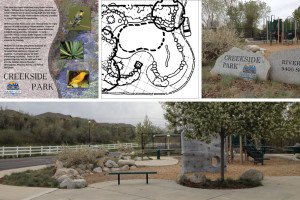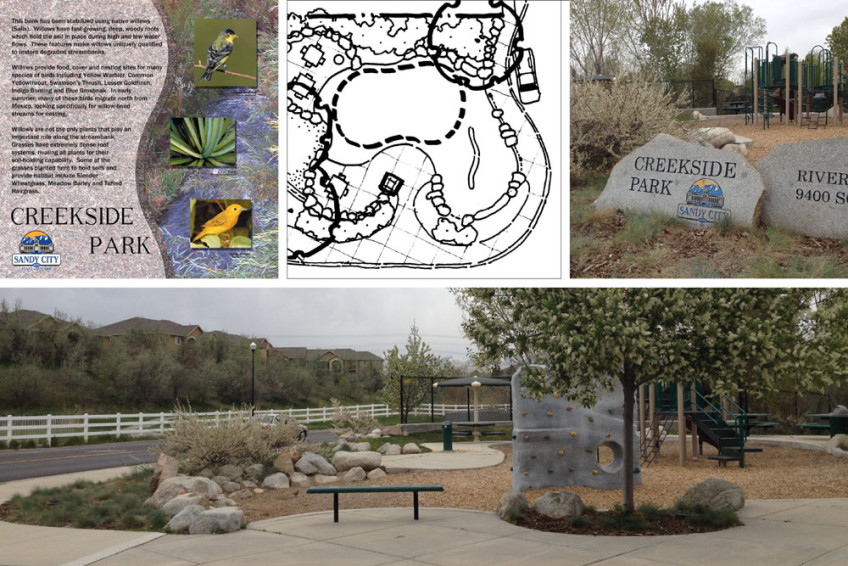The role of landscape architecture in improving public spaces
 Public spaces are vital in enhancing the quality of life in cities and communities. As a multidisciplinary field, landscape architecture has the power to transform public spaces into vibrant, functional, and sustainable environments. In this blog post, we will explore the significant role of landscape architecture in improving public spaces. We will delve into the key principles and design strategies employed by landscape architects at McNeil Engineering to create welcoming and inclusive spaces that promote social interaction, connectivity, and environmental stewardship. By understanding the value of landscape architecture, we can better appreciate its impact on the built environment and the overall well-being of communities.
Public spaces are vital in enhancing the quality of life in cities and communities. As a multidisciplinary field, landscape architecture has the power to transform public spaces into vibrant, functional, and sustainable environments. In this blog post, we will explore the significant role of landscape architecture in improving public spaces. We will delve into the key principles and design strategies employed by landscape architects at McNeil Engineering to create welcoming and inclusive spaces that promote social interaction, connectivity, and environmental stewardship. By understanding the value of landscape architecture, we can better appreciate its impact on the built environment and the overall well-being of communities.
Creating functional and inviting spaces
Landscape architecture focuses on designing functional public spaces, inviting, and well-suited to meet the needs of the community. Here are some critical aspects of creating such spaces:
- Site analysis and planning: Landscape architects conduct in-depth site analysis to understand the site’s physical characteristics, cultural context, and user requirements. This analysis informs the design process, ensuring that the public space is thoughtfully integrated into its surroundings and meets the community’s specific needs.
- Spatial organization: Landscape architects consider the spatial organization of public spaces, considering factors such as circulation patterns, seating areas, gathering spaces, and recreational zones. By carefully organizing the space, they create a harmonious and efficient layout that encourages various activities and social interactions.
- Accessibility and universal design: Landscape architects prioritize accessibility in their designs, ensuring that public spaces are inclusive and accessible to people of all ages, abilities, and backgrounds. Incorporating universal design principles, such as ramps, smooth pathways, and accessible amenities, enhances the usability and enjoyment of the space for everyone.
- Incorporating green infrastructure: Landscape architects integrate green infrastructure elements, such as rain gardens, green roofs, and permeable pavements, into public spaces. These features help manage stormwater runoff, mitigate the heat island effect, improve air quality, and provide ecological benefits. By incorporating green infrastructure, landscape architects create sustainable and resilient public spaces that contribute to the overall well-being of the environment and the community.
Promoting social interaction and connectivity
Public spaces serve as community gathering places, fostering social interaction and connectivity. Landscape architecture plays a crucial role in designing spaces that encourage these connections. Here are key strategies employed by landscape architects:
- Designing gathering spaces: Landscape architects create gathering spaces within public areas, such as plazas, squares, and amphitheaters. These spaces allow people to come together, socialize, and engage in community events. Thoughtful seating arrangements, shading, and interactive elements further enhance the appeal and functionality of these gathering spaces.
- Considering human scale and comfort: Landscape architects consider the human scale in their designs, ensuring that public spaces are comfortable and welcoming. Factors like appropriate lighting, comfortable seating, and shade structures create an inviting atmosphere that encourages people to spend time in these spaces.
- Encouraging active recreation: Landscape architects design public spaces that promote active recreation, such as sports fields, playgrounds, and fitness areas. These recreational elements encourage physical activity, enhance community health, and create opportunities for social interaction among individuals of all ages.
- Enhancing connectivity: Landscape architects prioritize connectivity between public spaces and community areas. By creating well-designed pedestrian and cycling pathways, bridges, and green corridors, landscape architects facilitate movement and accessibility, allowing people to easily navigate the city.
Environmental stewardship and sustainability
Landscape architecture embraces principles of environmental stewardship and sustainability, aiming to create public spaces harmonizing with the natural environment. Here are some key considerations:
- Green design practices: Landscape architects integrate sustainable design practices into their projects, such as using native plants, employing water-efficient irrigation systems, and implementing renewable energy sources. These practices reduce the environmental impact of public spaces and contribute to the overall sustainability of the community.
- Stormwater management: Landscape architects implement innovative stormwater management techniques, including rain gardens, bioswales, and detention basins. These features help mitigate the effects of stormwater runoff, improve water quality, and recharge groundwater sources.
- Ecological restoration: Landscape architects play a critical role in restoring and preserving natural habitats within public spaces. Through careful selection of plant species, habitat creation, and the establishment of wildlife corridors, they contribute to biodiversity conservation and enhance ecosystem services.
- Climate resilience: Landscape architects consider the impacts of climate change in their designs, implementing strategies to address issues like urban heat islands, flooding, and extreme weather events. By incorporating climate-resilient features such as green roofs, permeable surfaces, and shade structures, they create more resilient and adaptable public spaces.
Landscape architecture significantly improves public spaces by creating functional, inviting, and sustainable environments. Through careful planning, consideration of social interactions, and a commitment to environmental stewardship, landscape architects shape the built environment to enhance the well-being of communities. By recognizing the value of landscape architecture, we can prioritize the creation of inclusive, vibrant, and environmentally conscious public spaces.
We hope you’ll contact us here at McNeil Engineering if you ever need a landscape architect to help you with a new and exciting project. You can also check out some of our previous landscape architecture projects here.

